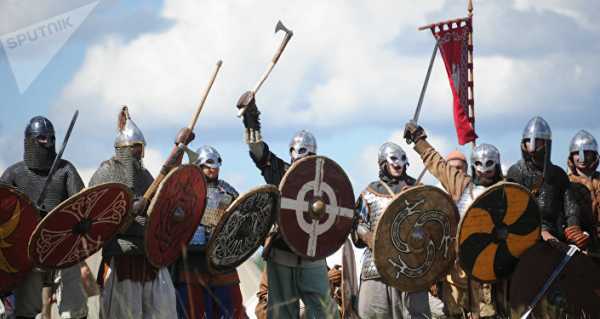
Although the Viking Age has long been an object of fascination for scientists and laymen alike, there is still not enough knowledge about how they practiced their specific religious practices, with new discoveries by archeologists promising to offer more insight.
A newly-discovered ancient Viking temple in Norway promises to shed light on the fascinating specifics of Norse religion.
Archaeologists from the University Museum in Bergen came upon traces of the heathen shrine used for worshipping ancient Norse gods such as Odin and Thor as they were excavating a massive site on the Ose farm near Orsta, in western Norway.
The scientists date their find to the early Iron Age (from 575AD) based on the remains of longhouses discovered there, along with traces of an even earlier agricultural settlement.
‘House of Worship’
What makes the discovery of the pagan temple so exciting is that traces of Viking places of worship are scarce in Scandinavia. Archeologists typically come across objects testifying to the fact that the site might have been used for religious practices.

Around 200 people dressed as Vikings simulate a battle during the Viking Festival at Trelleborg, the Viking fortress of King Harald Bluetooth from around year 980 ad, near Slagelse, south-west of Copenhagen, on Friday July 17, 2015
Now, according to ‘Life in Norway”, “for the first time, firm traces of a house of worship have been found in Norway”.
The team of archeologists had been involved in a recovery project before the construction of new housing in the area, when they made the discovery in the western section of the site. At first, they thought what they had found was a large longhouse.
The ancient Viking temple was approximately 46 feet (14 m) in length, and 26 feet (8 m) in width, with the original structure possibly as high as 40 feet (12 m).
The temple was supported by sturdy wall posts some 12 feet apart that supported the roof. The likely remains of these were discovered in the interior.
In other words, the structure found by the team resembles the very few Viking temples that have been found, such as the one in Tisso, Denmark. Scientists believe that such sites were used by cults, for worshipping and sacrifices.
Soren Diinhoff, a researcher at the University of Bergen, was cited by Live Science as saying:
Experts suggest large-scale winter and summer solstice events were celebrated in this temple, with worshippers making sacrifices to wooden statues of Thor, Odin and Freya.
Ritual Feasting and Blood Sacrifices
A large number of cooking pits were found around the structure, where animals were possibly sacrificed to the gods and cooked for human consumption, says Diinhoff.
A discovery several years made by archaeologists not far from the site of the temple also supports the current theory regarding the house of worship. According to Diinhoff:
Sourse: sputniknews.com






